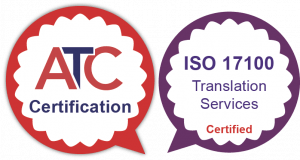When I started studying translation, one of the first things I learned is the Italian adage “Traduttore, traditore!” (Literally: translator, traitor!), which is not only a play on words but also a very concise way of saying that a translation will never be 100% faithful to the source text. Take this same expression, for example, you can of course translate it literally and the meaning of the words will be accurately conveyed, but the pun is lost, as the word play does not work anymore.
It seems that this expression dates back to 1500 or earlier and was initially applied to the French by Italians who felt that many French translations of Dante betrayed the beauty and accuracy of his work. This lack of equivalence between the source word or expression and the translation is called “lacuna” or “lexical gap”. But gaps exist on many levels: vocabulary, syntax, punctuation, phonology, morphology, etc. often differ from one language to another.
Languages will never be 100% equivalent and to expect a perfect translation it simply unrealistic, that is just the way things are. Add to the mix the fact that cultures and contexts also differ – so what may be an everyday concept or situation in one country may be completely unknown or have very different connotations in another – and a perfect translation becomes mission impossible. That is why what we consider to be a good translation is the closest possible approximation to the meaning and purpose of the source text.
At Comms we specialise in the translation of psychometric tests and assessments, exams, surveys and questionnaires. Those in the industry know that each single word used in this type of materials has been chosen for a very specific reason and all connotations and alternative meanings have been taken into account. The validity and reliability of these measuring tools relies heavily on the interpretation that readers will make of the words that are being presented to them. This is even more critical when it comes to verbal reasoning tests or tests that use language specifically to measure the outcome of the assessment.
Taking into account the previous conclusion that translation is not an exact science and is invariably a betrayal of the source text to an extent, the next logical conclusion is that a translation of a test or exam will never be as valid or reliable as the same test or exam in the source language.
Based on our extensive experience in this type of translations, we can assert that this is partially the case. Although it is true that you cannot just consider a simple translation of a test or exam to be as valid as its counterpart in the source language, there are ways to minimise the impact of the translation process on the validity and reliability of the test or exam. How easy it is to achieve this is a different matter!
Over the years, we have identified some key aspects that pose a risk:
- Lack of equivalence of words or expressions
- Words with multiple meanings or connotations
- Cultural and contextual differences
- Other linguistic differences
Such risks exist, but we can make an effort to avoid their consequences, by carrying out the following steps:
- In-depth analysis of the source text to determine: target audience and exact purpose of the text, reasoning behind each item, intended meaning of specific words or expressions, appropriate vocabulary and style to be used.
- Adaptation/localisation of the source text as required in order to ensure that the translated content will be meaningful and valid for the intended audience and purpose of the text.
- A complex translation process including: translation and independent proofreading from the source language into the target language, and then the same process but in reverse order, so the forward translation is translated back into the source language.
- Provision of translation notes by the teams, explaining lexical gaps and the solutions they found to convey the meaning, as well as any potential risks that may still be present in the translation.
- In-depth analysis of the forward and back translations to identify discrepancies and potential gaps and issues.
- Discussion of the translations with both teams and fine-tuning/finalisation of the translated text.
- Review of the translations by a subject matter expert (SME) and/or an expert in the test/exam itself.
- Contextual review of the translated content once in its final layout.
- Trialling and validation of the translated version of the test/exam.
- Further fine-tuning of the translation (if needed).
- Normative data collection of the translated test/exam using a relevant sample of the target audience and adjustment of scoring.
- Regular differential item functioning (DIF) analyses to monitor the performance of the translated test/exam.
This is certainly not the most straightforward, quick or inexpensive process to follow, but as the old saying goes, “excellence comes at a price” or “la qualità si paga” which is the closest Italian expression I could think of!
